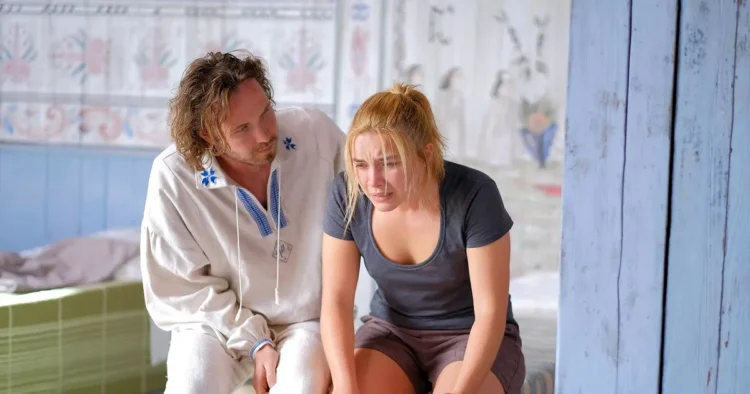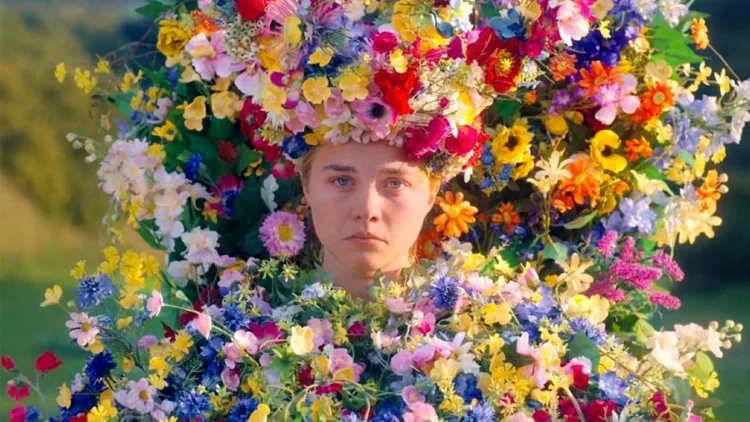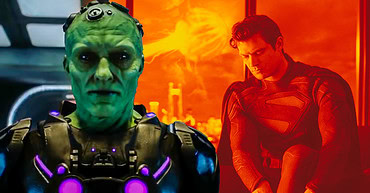In 2018, writer-director Ari Aster came out of the gates hard with Hereditary, which received high praise from both fans and critics. However, his second feature, Midsommar, was an entirely different beast. Boosting a stellar cast that includes Will Poulter and Florence Pugh, Midsommar focuses on a young American couple who travel to a Swedish midsummer festival with a group of friends. At first, everything seems like paradise, but their wonderful time in the sun turns into a nightmare that unveils a shocking agenda the locals have.
By this point in time, the horror genre had evolved from traditional horror. Midsommar was not a slasher but a psychological experiment that played off the emotions of a floundering relationship and heavily used influences of religion to bring out the true horrific elements. There were any jump scares. Even more, the usual night setting didn’t set the mood for what was to come. Aster played off the notion that hell hath no fury like a woman scorned. Altogether, Midsommar became one of the most unforgettable horror experiences in the past five years. So, here’s how Midsommar subverted the horror genre.
The Film Takes Place In Sweden

Right off the bat, Midsommar subverted the horror genre with its location. When it comes to the horror genre, the locations tend to be small in scope. Often the best horror films are centered around a protagonist in a closed environment. Take Alien, for example. The crew is trapped in the confines of space. This meant that Ripley and her crew had no chance of escaping the unknown entity that mysteriously got into their ship. This created a claustrophobic, tension-filled sense of dread and horror throughout the 1979 feature.
However, the purpose isn’t to say that Midsommar’s change of landscape eliminates any of that notion. The biggest difference is the cultural shift that Americans aren’t accustomed to. When you look at the set design of Midsommar, there’s nothing horrific about it. It seems like a joyous festival that’s deeply rooted in a unique religion. The film goes against-type the typical tone that horror movies usually display.
It makes the environment even creepier because the terror is a slow burn that crawls through your skin methodically. There aren’t any jump scares. Or a wild manic trying to kill a group of Americans. It’s a twisted group of Sweden locals who have their own morals and beliefs that audiences aren’t accustomed to in horror films. The true motivation for why Dani was chosen remains unknown, but the religious aspects heavily placed in the factor of one’s culture is a big part of why the feature is so scary in the first place.
Character Motivations

It’s ultimately revealed that Dani is chosen as May Queen for the Harga. It’s a once-every-90-year ritual that requires eight sacrifices: four locals and four outsiders. Dani was never in on this plan, but she’s smiling at the end. The whole film was about Dani’s descent into happiness. Midsommar starts off with the tragedy of Dani losing her family. It doesn’t help that her relationship with Christian (Jack Reynor) is pretty rocky. She’s depressed and dealing with trauma. Dani smiling isn’t due to the happiness of murdering her boyfriend and his friends. It’s because she’s found a family to help her cope.
It’s a twisted ideology but a unique one. Usually in horror situations, the lead protagonist is trying to escape or fight danger. It taps into the issues of mental health, and that’s nothing particularly new in itself. But having the character end up on such a dark path surely is. The character overall isn’t your typical horror movie player.
The intentions of the locals in Sweden aren’t clear until the very end. They never come across as threatening, though it’s clear that they’re up to no good. Ari Aster goes beyond the surface level for his character and crafted three dimension beings that add to the lore of Midsommar. It takes the grief of one character and spins it into the misery of others. And that’s usually for the antagonist. It’s clever writing that expands the lore of a random evil person causing harm to others. People can change, even if that change turns out to be worse for mankind.
The Final Girl

Concluding how Midsommar subverted the horror genre, here’s the last piece of the puzzle. The final girl is indeed Dani, but she’s not fighting against the evil that’s being presented to her. She’s such a broken shell of a human being that it doesn’t manner. She ends up killing the last thing that she holds near and dear to her life — Christian. The final girl trope is mainly reserved for slasher pictures, but Midsommar does put a spin on what that definition is here. Dani does win and save the day; however, Dani’s win is finally finding a family and overcoming the depression that’s drastically affected her mental state.
 Follow Us
Follow Us





